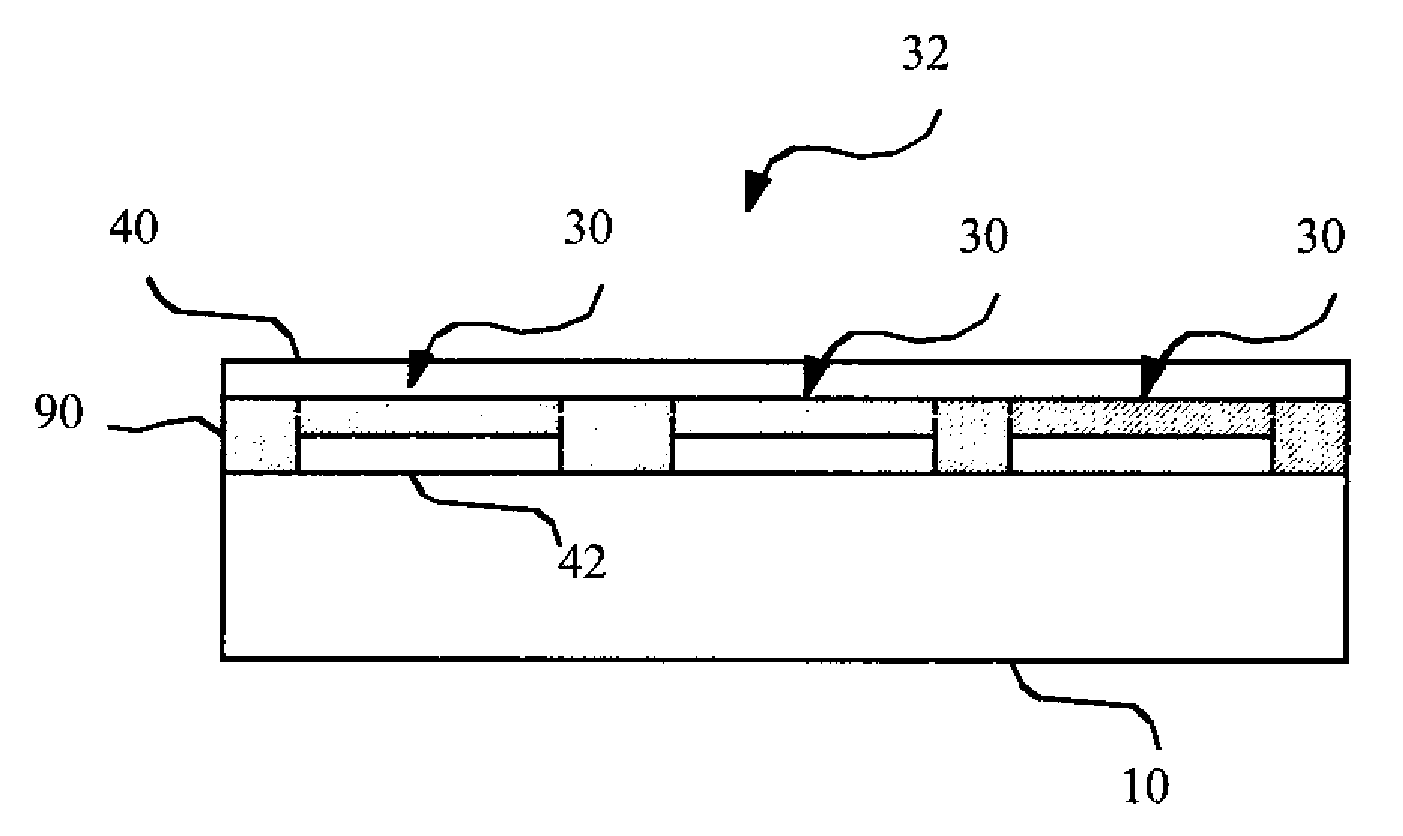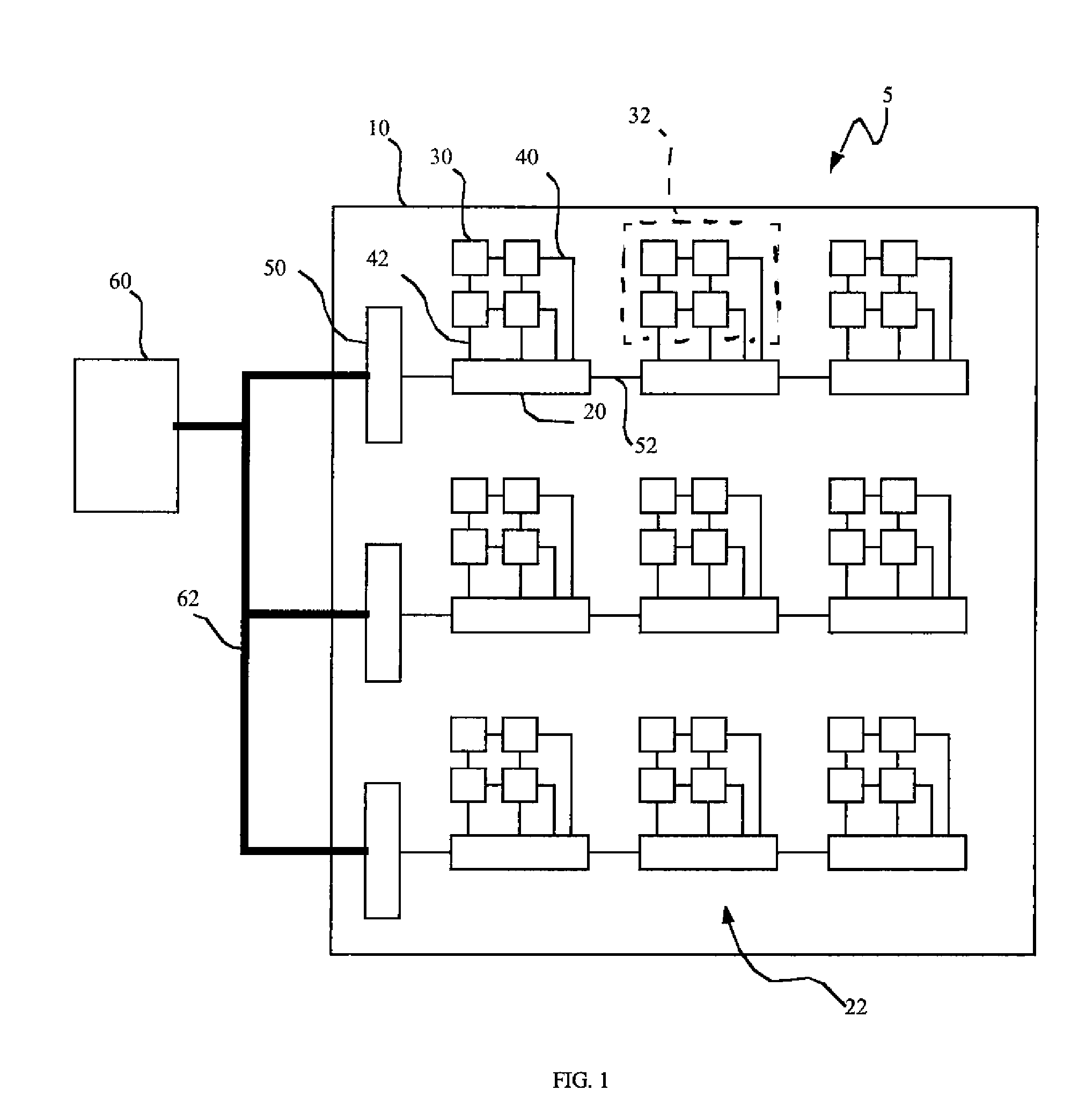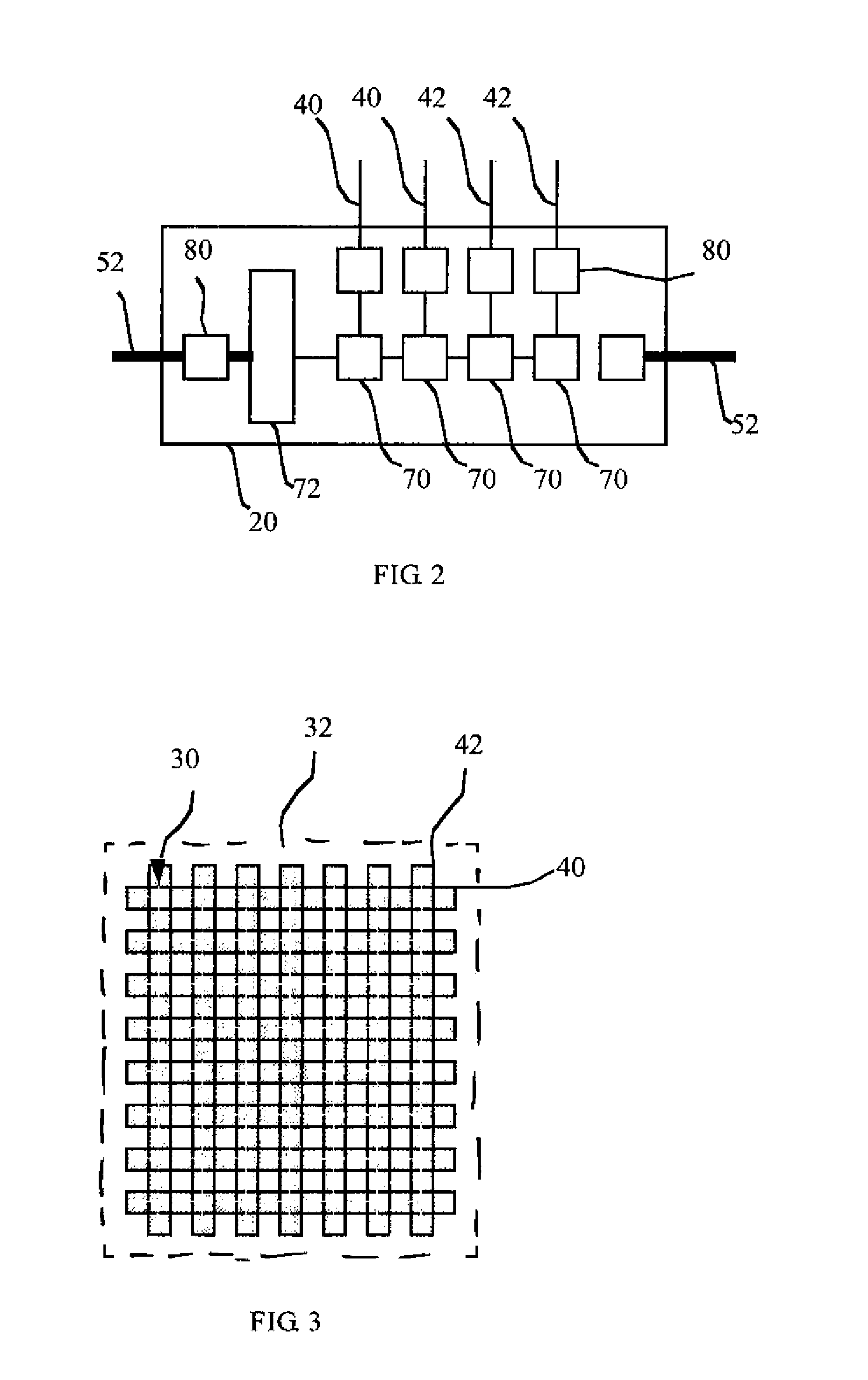Display device with chiplets and hybrid drive
- Summary
- Abstract
- Description
- Claims
- Application Information
AI Technical Summary
Benefits of technology
Problems solved by technology
Method used
Image
Examples
Embodiment Construction
[0018]In one embodiment, the present invention comprises an imaging device having a hybrid drive. The imaging device can be, for example, an image display device (e.g. an emissive device) or an image capture device (e.g. a light-sensitive device). A hybrid drive, as disclosed herein, is a means for controlling the luminance of an array of light-emitting elements that combines attributes of both passive-matrix and active-matrix control. Referring to FIG. 1, the imaging device 5 comprises a single, continuous substrate 10. A two-dimensional pixel array is formed on the substrate 10, the pixels 30 associated into a plurality of pixel groups 32, each pixel group 32 including at least four pixels 30 and including a separate set of group row electrodes 40 and group column electrodes 42 connected to and driving only the pixels 30 in the corresponding pixel group 32, each of the group row electrodes 40 connected to two or more pixels 30 and each of the group column electrodes 42 connected t...
PUM
 Login to View More
Login to View More Abstract
Description
Claims
Application Information
 Login to View More
Login to View More - R&D
- Intellectual Property
- Life Sciences
- Materials
- Tech Scout
- Unparalleled Data Quality
- Higher Quality Content
- 60% Fewer Hallucinations
Browse by: Latest US Patents, China's latest patents, Technical Efficacy Thesaurus, Application Domain, Technology Topic, Popular Technical Reports.
© 2025 PatSnap. All rights reserved.Legal|Privacy policy|Modern Slavery Act Transparency Statement|Sitemap|About US| Contact US: help@patsnap.com



